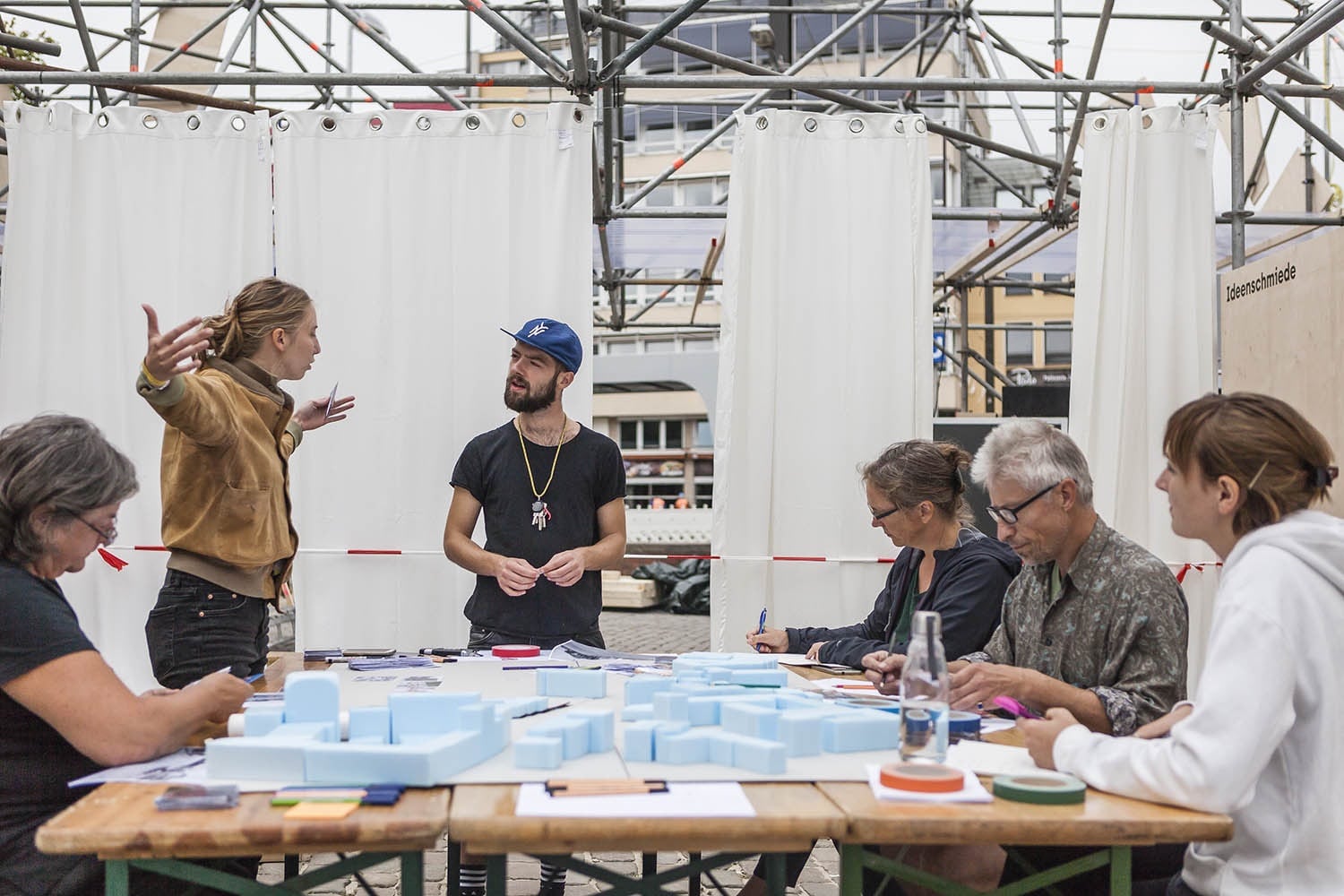Downloads
DOI:
https://doi.org/10.7480/rius.6.102Keywords:
co-productive city, open planning processes, Holzmarkt Berlin, on-site participation, co-creation in planning, inclusive urbanism, strategic urban designAbstract
Increasingly, civil society is demanding greater participation and involvement in urban development. For this reason, planning processes have become more openly structured in recent years, offering a wider range of opportunities for participation. In order to enable such participation not only in planning but also in producing the city itself, structures for the co-production of urban space have now established themselves. The co-productive city is being made reality by civil society and local actors, whose goal is to create a long-term and sustainable value creation chain. As a counter-model to the neoliberal city, co-productive urban development requires alternative financial and organizational structures. Here our primary focus is the community-based and inclusive production of space that also redefines the role of the planner.
How to Cite
Published
Issue
Section
License
Copyright (c) 2020 Melanie Humann

This work is licensed under a Creative Commons Attribution 4.0 International License.
References
Burckhardt, L. (2005). Wer plant die Planung? In J. Fezer, & M. Schmitz (Eds.), Wer plant die Planung? Architektur, Politik und Mensch. Martin Schmitz Verlag.
Buttenberg, L., Overmeyer, K., & Spars, G. (Eds.). (2015). Raumunternehmen Wie Nutzer selbst Räume entwickeln. Jovis Verlag.
Fezer, J. (2013). Offene Planung. In P. Oswalt, K. Overmeyer & P. Misselwitz (Eds.), Urban catalyst: The power of temporary use (pp. 165-189). DOM publishers.
Ganser, K., Siebel, W., & Sieverts, T. (1993). Die Planungsstrategie der IBA Emscher Park. Eine Annäherung. RaumPlanung 61, 112–118.
Gaurav, B. (2011). Collaboration and co-creation in knowledge kinetics. Springer Science+Business.
Harvey, D. (2012). Rebel cities: From the right to the city to the urban revolution. Verso Books.
Healey, P. (2008). Making choices that matter. The practical art of situated strategic judgement in spatial strategy making. In J. Van den Broeck, F. Moulaert, & S. Oosterlinck (Eds.), Empowering the planning fields, ethics, creativity and action (pp.23-41). ACCO.
Holzmarkt plus eG. (2013). Holzmarkt, Konzept & Architektur. Holzmarkt plus eG.
Humann, M. (2019). Gemeinsam Entwerfen: Ko Kreation im Städtebau. In Stadtbauwelt 6.2019: Stadt lehren, aber wie? Bauverlag.
Kühn, M. (2009). Strategische Planung – Vom Schlagwort zum Modell. In M. Kühn & M.H. Liebmann (Eds.), Regenerierung der Städte. VS Verlag für Sozialwissenschaften.
Landeshauptstadt München. (2017, July 26). Referat für Stadtplanung und Bauordnung, Verfahrensgrundsätze zur Sozialgerechten Bodennutzung in der Neufassung [Guideline]. https://www.muenchen.de/rathaus/dam/jcr:832b8345-e0eb-4e3d-a637-dfb341296b0c/Verfahrensgrunds%C3%A4tze%20neu.pdf
Lefebvre, H. (1974). The production of space. Blackwell.
Lu, D. (2012). Entangled modernities in architecture. In C.G. Crysler, S. Cairns & H. Heynen (Eds.), The SAGE handbook of architectural theory (pp. 231-246). Sage.
Mahaffey, N., & Wolf, G. (2016). Designing difference: Co-production of spaces of potentiality. Urban Planning 1(1), 59 – 67.
Oswalt, P., Overmeyer, K., & Misselwitz, P. (Eds.). (2013). Urban Catalyst – Mit Zwischennutzungen Stadt entwickeln. DOM publishers.
Otto, K.-S., Fleischmann, F. (2014). Organisationsmodelle in Buttenberg. In S. Overmeyer (Ed.), Raumunternehmen - Wie Nutzer selbst Räume entwickeln (pp. 133 – 139). Jovis Verlag.
Otto, K.-S., Speck T. (Eds.). (2011). Darwin meets business. Evolutionäre und bionische Lösungen für die Wirtschaft. Gabler Verlag.
Salomon, D. (2012). Plural profession, discrepant practices. In C.G. Crysler, S. Cairns & H. Heynen (Eds.), The SAGE handbook of architectural theory (pp. 430-442). Sage.
Schmidt-Eichstaedt, G. (2010). Mellowpark Campus. Bundesministerium für Verkehr, Bau- und Stadtentwicklung und Bundesinstitut für Bau-, Stadt und Raumforschung. BBSR.
Watson, V. (2014). Co-production and collaboration in planning – The difference. Planning Theory & Practice 15(1), 62-76.




